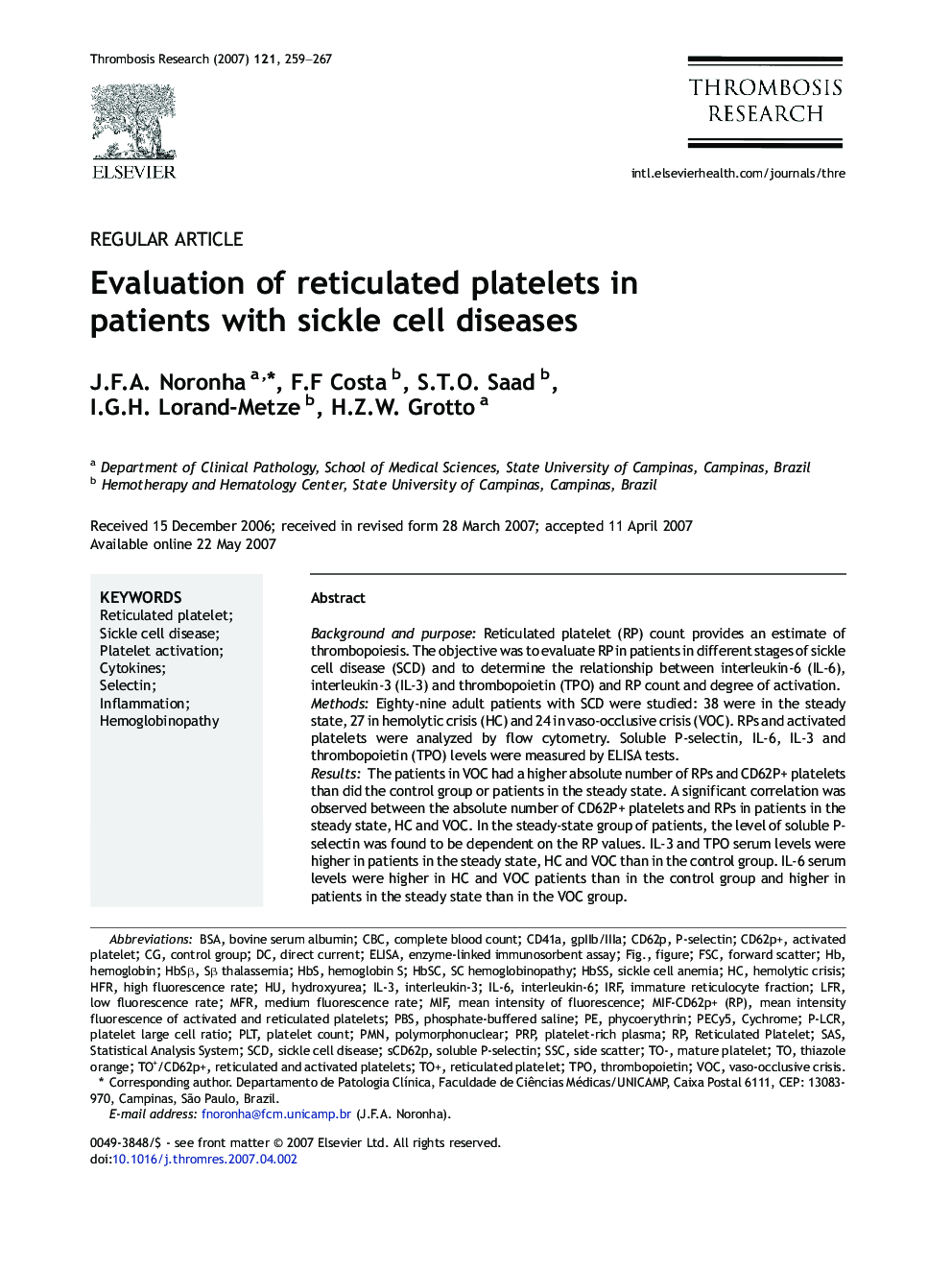| Article ID | Journal | Published Year | Pages | File Type |
|---|---|---|---|---|
| 3029904 | Thrombosis Research | 2007 | 9 Pages |
Background and purposeReticulated platelet (RP) count provides an estimate of thrombopoiesis. The objective was to evaluate RP in patients in different stages of sickle cell disease (SCD) and to determine the relationship between interleukin-6 (IL-6), interleukin-3 (IL-3) and thrombopoietin (TPO) and RP count and degree of activation.MethodsEighty-nine adult patients with SCD were studied: 38 were in the steady state, 27 in hemolytic crisis (HC) and 24 in vaso-occlusive crisis (VOC). RPs and activated platelets were analyzed by flow cytometry. Soluble P-selectin, IL-6, IL-3 and thrombopoietin (TPO) levels were measured by ELISA tests.ResultsThe patients in VOC had a higher absolute number of RPs and CD62P+ platelets than did the control group or patients in the steady state. A significant correlation was observed between the absolute number of CD62P+ platelets and RPs in patients in the steady state, HC and VOC. In the steady-state group of patients, the level of soluble P-selectin was found to be dependent on the RP values. IL-3 and TPO serum levels were higher in patients in the steady state, HC and VOC than in the control group. IL-6 serum levels were higher in HC and VOC patients than in the control group and higher in patients in the steady state than in the VOC group.ConclusionOur results suggest that PRs contribute to the vaso-occlusive process in sickle cell disease. Increased interleukin serum levels probably indicate that inflammatory process is involved in the vascular–occlusive phenomenon. However, it appears that these inflammatory mediators do not have an effect on thrombopoiesis in sickle-cell-disease patients.
